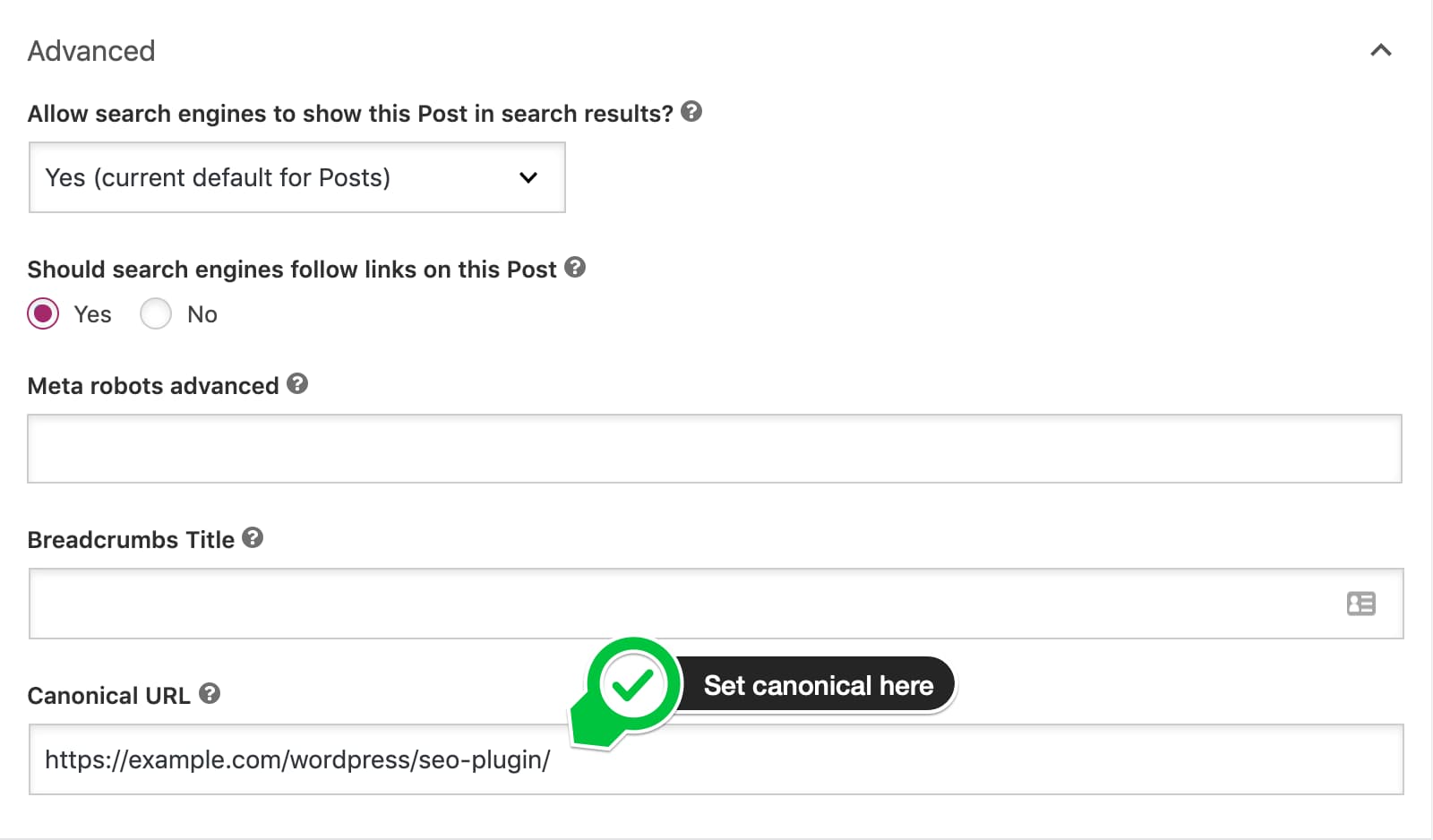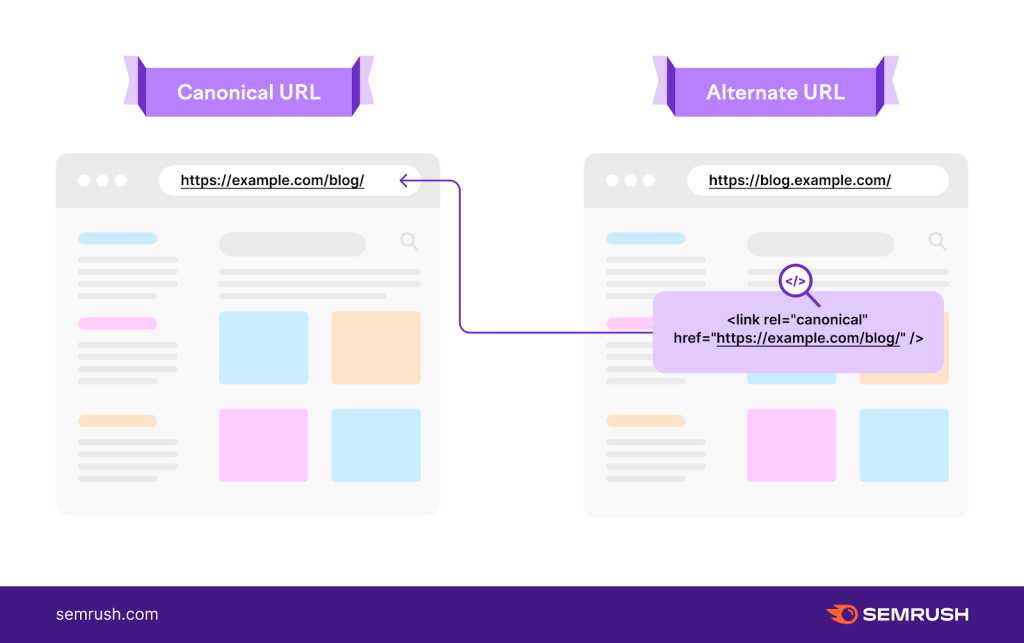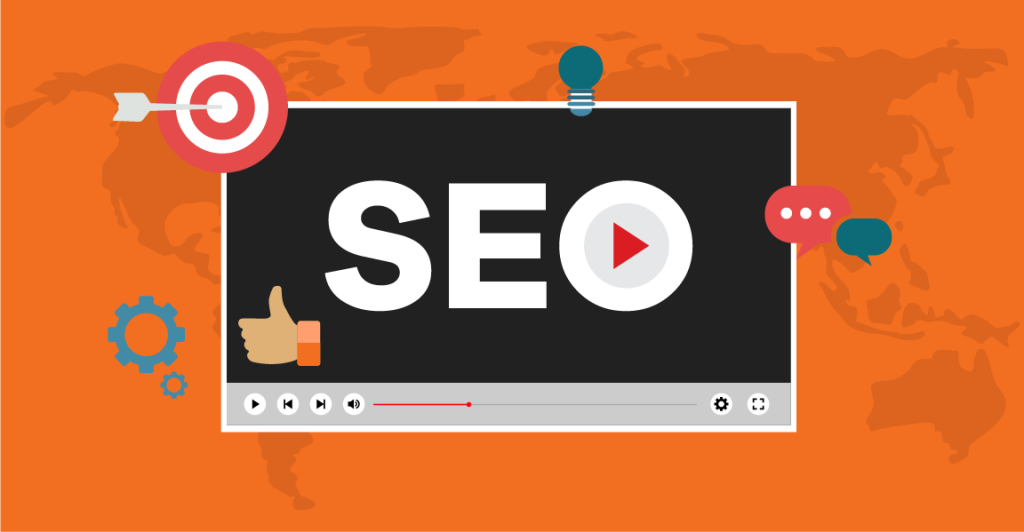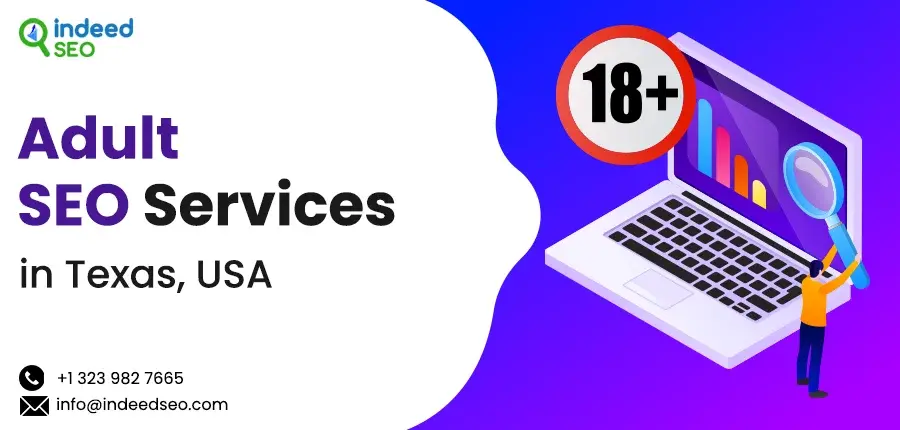A canonical URL in SEO specifies the preferred version of a web page. It helps prevent duplicate content issues in search engines.
Understanding the concept of a canonical URL is crucial for maintaining the health and efficiency of your website in the digital world. Search engines, like Google, strive to provide users with the most relevant content. They can become confused when multiple versions of the same content appear across different URLs.
This is where the magic of a canonical URL comes into play. By clearly marking the preferred URL, you guide search engines to consolidate ranking signals, such as links and content metrics, to your chosen version. This practice not only enhances your site’s SEO performance but also ensures a better user experience by directing visitors to the most relevant page. Embracing the canonical tag is a smart move for website owners aiming for higher visibility and ranking in search engine results.

Credit: yoast.com
Introduction To Canonical Urls
Introduction to Canonical URLs dives into an essential SEO concept. This concept helps websites tell search engines which URL is the main one. It solves problems with duplicate content. Let’s explore this topic further.
The Concept Of A Canonical Url
A canonical URL is the web address preferred by a site owner. Sites often have pages with similar or identical content. The canonical tag () guides search engines. It points them to the URL you wish to rank in search results. This tag is a hint, not a command, but search engines usually follow it.
Importance In Seo
Why is setting a canonical URL vital for SEO? First, it prevents issues with duplicate content. Duplicate content can confuse search engines. They might not know which page to rank. This confusion can hurt your site’s visibility.
- Improves site ranking by consolidating link signals. All links to duplicate pages boost the canonical URL.
- Enhances user experience by guiding visitors to the preferred page.
- Saves crawl budget by directing search engines to the content that matters.
Remember, a correctly used canonical tag speaks clearly to search engines. It ensures your preferred URL gains the visibility it deserves.

Credit: www.shopify.com
Identifying Common Url Issues
Identifying Common URL Issues is crucial for SEO success. Websites often face challenges with URL structures. These can hurt search engine rankings. Let’s explore some common problems and their solutions.
Duplicate Content Challenges
Duplicate content confuses search engines. Similar content on different URLs can do this. Canonical URLs solve this problem. They tell search engines which version to index. This prevents SEO issues.
- Check for URLs with and without “www”
- Look for pages with similar content
- Use 301 redirects to the preferred URL
Tracking Parameters And Session Ids
Tracking parameters and session IDs create unique URLs. These URLs lead to the same content. This can create many similar pages.
| Issue | Solution |
|---|---|
| URLs with tracking codes | Use the “rel=canonical” tag |
| Session ID in URL | Store session data in cookies |
Using canonical tags helps. It combines these pages into a single content source. This improves SEO rankings.
How Canonical Urls Resolve Duplication
When the same content appears on multiple URLs, confusion arises. Search engines may struggle to select the right page to rank. Canonical URLs fix this issue.
Consolidating Link Signals
Link equity is critical for SEO. Duplicate content splits this equity. Canonical tags combine these signals. This directs all link strength to a single URL.
- Backlinks point to one authoritative page.
- PageRank improves for the canonical version.
- Duplicate pages don’t compete for rankings.
Enhancing Search Engine Understanding
Canonical tags clarify content relationships. Search engines then understand which page to index. User experience benefits as a result.
- Search engines index the preferred URL.
- Users find the most relevant content first.
- Content creators control their online presence.
Canonical URLs ensure search engines and users see the best content.
Implementing The Canonical Tag
When multiple pages have similar content, search engines can get confused. A canonical tag tells search engines which page is the main one. This avoids problems like duplicate content. Let’s learn how to use canonical tags the right way.
Correct Syntax For Canonical Tags
A canonical tag must be correct to work. Place it in the
section of your HTML. It looks like this:Remember, the URL in the href attribute is the preferred page URL.
Common Mistakes To Avoid
Using canonical tags needs attention. Mistakes can harm your SEO. Here are common errors:
- Incorrect URL: Always double-check the URL you put in the href attribute.
- Too Many Tags: Only one canonical tag per page. More can confuse search engines.
- Broken Links: Ensure the canonical URL is live and not a 404 error page.
- Tag Chains: Avoid linking a canonical to another canonical. Keep it direct.
Follow these guidelines to help search engines understand your content better. This improves your site’s SEO and visibility.
Canonicalization And Site Architecture
Canonical URLs play a crucial role in SEO. They tell search engines which version of a page to prioritize. This avoids issues with duplicate content. A well-structured site architecture enhances the use of canonical tags. It guides search engines through site content efficiently.
Pagination And Canonical Tags
Pagination splits content across multiple pages. Canonical tags manage these series. They link to the preferred page. This helps search engines understand content structure.
Use canonical tags on each paginated page. Point them to the series’ main page. This consolidates link equity. It also boosts the main page’s SEO value.
- Identify the main content page.
- Add a canonical tag in the HTML head section.
- Ensure all paginated pages refer back to it.
Handling International Websites
International sites often create duplicate content in different languages. Canonical tags solve this. They point to the original content version.
Use the hreflang attribute for language targeting. This guides search engines to the correct language page. Pair it with canonical tags for the best results.
Here’s how to handle international sites:
- Set a canonical URL for each content piece.
- Use hreflang tags for language variations.
- Ensure canonicals are consistent across language versions.
Impact On Search Engine Rankings
The impact on search engine rankings is significant with canonical URLs. These URLs tell search engines which version of a page to show. This avoids duplicate content issues. It helps improve your site’s SEO.
Canonical Tags And Page Authority
Canonical tags help search engines understand your preferred page version. This boosts your page’s authority. Pages with high authority rank better. Use canonical tags wisely to strengthen your site’s SEO.
- Define a primary page to improve its rank.
- Avoid duplicate content penalties by using these tags.
- Canonical tags consolidate page strength.
Influence On Crawl Budget
A canonical URL affects your site’s crawl budget. Search engines have a limit on how many pages they crawl. By using canonical tags, you ensure search engines spend time on the right pages. This makes your site more efficient.
| Without Canonical Tags | With Canonical Tags |
|---|---|
| Wasted crawl budget on duplicates | More focus on important pages |
| Lowered page authority | Increased page authority |
- Identify duplicate content pages.
- Choose the preferred URL.
- Apply canonical tags to duplicates.
Remember, canonical URLs guide search engines. They help your site rank better. Use them to direct focus to your main pages. This enhances your site’s SEO and visibility.
Canonical Urls And Content Management Systems
Canonical URLs and Content Management Systems play a crucial role in SEO. They help search engines understand which page to consider as the main version in cases of duplicate content. Content Management Systems (CMS) often include features to set these URLs easily. Let’s delve into how WordPress and various e-commerce platforms handle canonical tags.
WordPress And Canonicalization
WordPress simplifies SEO through plugins. A popular plugin, Yoast SEO, allows for easy canonical URL setup. Users input the preferred URL in the Yoast meta box on the post edit screen. WordPress then adds the appropriate element to the page header automatically.
E-commerce Platforms And Canonical Tags
- Shopify: Automates canonical tags for products and pages. Users need not manually intervene.
- Magento: Offers options to set canonical links for products and categories via the admin panel.
- WooCommerce: Works with WordPress plugins to manage canonical URLs. Users set them on product pages.
Best Practices For Canonicalization
Mastering canonicalization is key to avoid duplicate content issues. It guides search engines to the preferred URL. This ensures that SEO efforts are not diluted. Let’s explore the best practices for canonicalization.
Regular Audits For Canonical Urls
Performing regular checks on canonical URLs is crucial. It ensures the correct pages rank in search results. Here are steps to maintain canonical integrity:
- Identify duplicate content: Use tools to spot duplicates.
- Review canonical tags: Ensure they point to the correct URLs.
- Check redirects: Confirm they do not conflict with canonicals.
- Update content: Make necessary changes to keep URLs current.
Integrating Canonical Tags With Xml Sitemaps
XML sitemaps and canonical tags should work together. This makes it easier for search engines to crawl and index content. Follow these steps:
- Include canonical URLs in your XML sitemap.
- Ensure accuracy of the URLs listed in the sitemap.
- Update the sitemap with new or changed canonicals.
Troubleshooting Canonical Issues
Troubleshooting Canonical Issues is crucial for SEO health. Canonical tags guide search engines to the preferred URL of similar or duplicate content. Mistakes here can hurt rankings and visibility. Let’s fix common canonical problems.
Identifying Misused Canonicals
First, check if canonical tags are correct. Look for signs:
- Multiple tags on a page
- Canonicals pointing to non-existent pages
- URLs leading to unrelated content
Use SEO tools to scan for these issues. They highlight pages with wrong canonicals.
Fixing Canonical Errors
Correcting errors ensures search engines index your content right. Follow these steps:
- Review: Assess the canonical tags on your pages.
- Update: Change tags to point to the correct URLs.
- Consolidate: If pages are similar, choose a master page.
- Test: Use Google Search Console to test tag effectiveness.
Remember, consistency is key. Make sure all pages follow the same rules.
The Future Of Canonical Tags In Seo
Canonical tags play a crucial role in SEO strategies. They help search engines understand duplicate content. This ensures the right page ranks in search results. As search technology evolves, so does the use of canonical tags. Let’s explore how these might change.
Evolving Search Engine Algorithms
Search engines constantly improve their algorithms. They aim to provide the best user experience. This includes how they handle canonical URLs. Google, for instance, updates its algorithm regularly. These updates can affect how canonical tags are interpreted.
- Machine learning could predict the most relevant canonical URL.
- Algorithms may consider user behavior to determine canonical pages.
- Search engines could better identify near-duplicate content.
Predictions For Canonicalization
Looking ahead, predictions for canonical tags in SEO are promising. They will likely become more sophisticated. Here are some anticipated developments:
| Year | Prediction |
|---|---|
| 2023 | Increased accuracy in selecting canonical pages. |
| 2024 | Integration with AI for smarter canonicalization. |
| 2025 | Automatic canonical tag generation by search engines. |
Canonical tags will continue to guide search engines. They will ensure the best page versions appear in search results. SEO experts must stay informed about changes. They must adjust strategies to maintain site visibility.

Credit: www.semrush.com
Frequently Asked Questions
What Is Meant By Canonical Url?
A canonical URL is the preferred web address for a page, guiding search engines to index the correct version. It helps avoid duplicate content issues, improving site SEO. Users set it via HTML or HTTP headers to consolidate page rankings and ensure search engines display the desired URL.
What Is Canonical Use In Seo?
A canonical tag in SEO tells search engines which version of a page is the master copy. It helps prevent duplicate content issues, ensuring the correct page ranks in search results. Use it wisely to guide search engine bots and improve your site’s SEO performance.
What Is The Difference Between Canonical And Non Canonical Url?
A canonical URL is the preferred address of a webpage, while non-canonical URLs are variations that point to the same content without penalizing for duplicate content. Canonicals consolidate SEO value, non-canonicals do not.
How Do I Know If My Url Is Canonical?
Check your URL’s canonical status by inspecting the page’s HTML for a “link rel=canonical” tag. This tag specifies the preferred URL, indicating if your URL is canonical. Use tools like Google Search Console to further confirm.
Conclusion
Understanding canonical URLs is crucial for SEO success. They prevent duplicate content issues, ensuring search engines index the right pages. By using canonical tags effectively, you guide search engine crawlers, enhance user experience, and bolster your site’s SEO. Remember, proper implementation paves the way for stronger site credibility and higher rankings.
Embrace canonicalization and watch your website flourish in the digital landscape.


